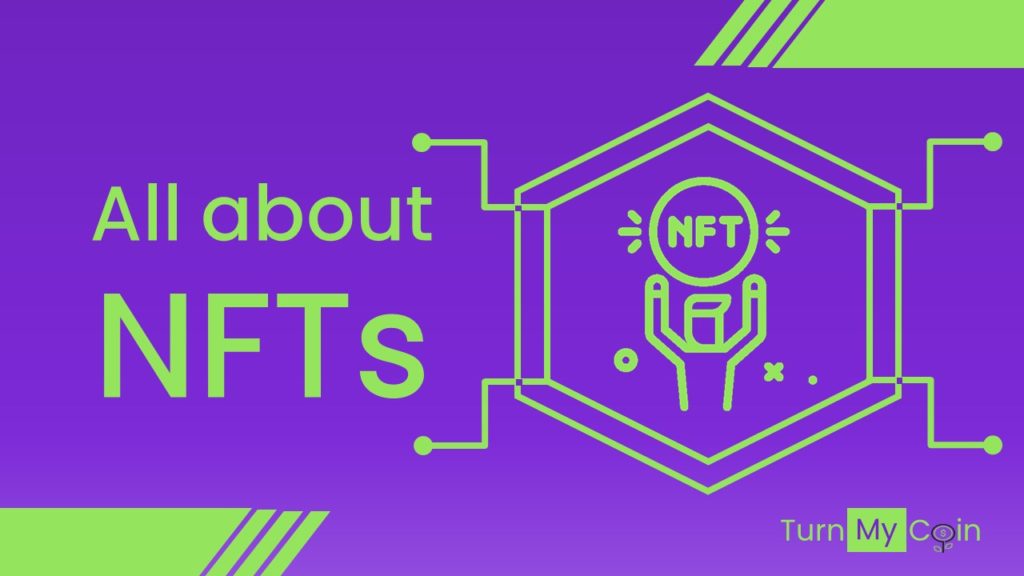Last updated on June 22nd, 2024 at 01:45 pm
Introduction
69 million dollars was the sale price of an NFT of digital artist Beeple (Mike Winkelmann). Well, if you have been following up on cryptocurrency news, then you must have heard about the new term NFT! NFTs have taken the world by surprise.
Presently, they are the most sought out and trending topic in the Cryptocurrency Arena.
In the following blog section, we have broken down the entire concept of NFT to make sure that you get complete information about NFTs and the buzz around!
Therefore, if you have any doubts about the topic, you can refer to this blog section as a complete guide for NFT.
Let’s jump right into the concept.
What is NFT?
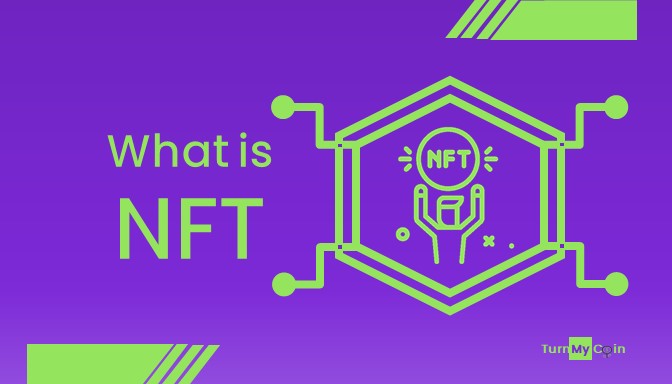
The term NFT stands for Non-Fungible Token. I know this full isn’t much of a help either.
Let me first tell you about the Fungible Tokens. Bitcoin for example is the most famous cryptocurrency in the market today. Each unit of Bitcoin is worth the same amount in say USD.
This means if one Bitcoin costs $67,000 then other Bitcoin units would cost the same. Hence, Bitcoin in essence is a fungible token. Hence, Bitcoin is an interchangeable asset. You can read all about bitcoin here.
However, in the case of Non-Fungible tokens, the value of each unit is different. I hope this explains the difference between Fungible and Non-Fungible tokens, to begin with.
To make this easier, the traditional fungible assets are something that can be exchanged in terms of value. For example, a $100 bill can be exchanged against the 2 X $50 bills, and still, they will have the same value. But this is not the same with the Non-Fungible token. Each token has its unique value and it utilizes blockchain technology for validation & transfer of ownership.
Moving forward…. NFTs are a digital version of an asset. Most specifically Music, Artwork, a soft copy of your memories, a short video and even an autographed tweet. Just like different artworks fetch different prices likewise different NFT fetch different prices.
The NFTs allow you to tokenize & create a digital ownership certificate for the exchange transactions.
NFTs are termed as the token of ownership for valuable assets around the world. They run on a similar blockchain network, but it is not a cryptocurrency!
How does it work?
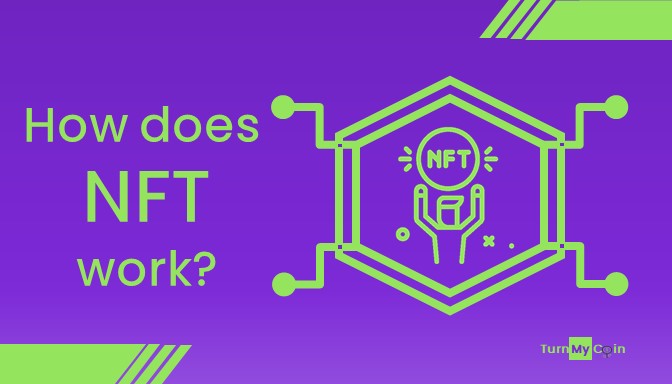
In the real world, there are a lot of assets such as paintings, patents, real estate, music etc. Many of these are prone to duplicacy/piracy. There are endless counterfeit copies of paintings, patents, machinery around the world. Many times a user doesn’t even know if he is using a duplicate copy of an asset.
NFTs helps deal with this problem.
All cryptocurrencies use blockchain technology. If you want to understand more about blockchain technology, then please pause here and read our article on Blockchain to understand things better.
The records in the case of a Public blockchain (used by most crypto-assets) are available to everyone freely. This means that if I have purchased an NFT for 69 million dollars (I doubt I would ever do that 😀 ), everyone around the world can check the details of ownership on the publicly shared ledger.
As a result, with NFTs there can be just one authentic digital copy of Leonardo Da Vinci’s Mona Lisa. And the ownership can be verified easily.
That’s how NFTs have become so famous, but are they worth it? Let’s find out shortly!
NFT eliminates Fraud
NFT eliminates the chances of fraud as witnessed in a traditional exchange transaction due to blockchain technology. Here, the record of the transactions is verified and maintained by thousands of computers in a blockchain network.
Also, NFTs come with an option to include Smart contracts. For example, it is helpful for art owners to collect a royalty on every sale by entering into a contract with the possessor.
Well, NFT utilizes the same blockchain technology. It is a decentralized token for transferring the ownership of both physical and digital assets.
Why are some NFTs worth Millions?
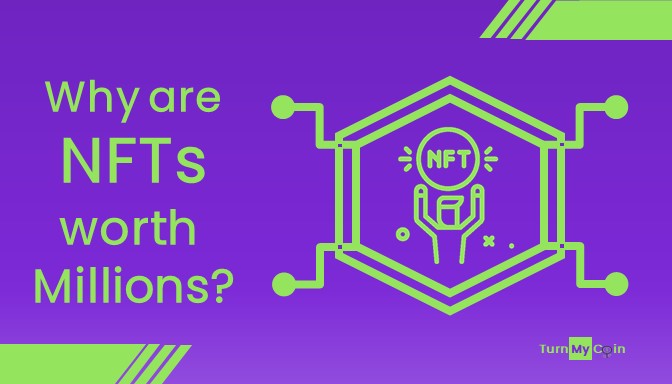
As mentioned before NFTs represent a unique token of ownership for digital and physical assets. It protects the Assets from duplicacy & piracy, where the asset can be verified over the blockchain network.
Yes, some NFTs can be worth Millions, but one thing is for sure it depends directly on the asset that NFT holds within.
Taking a few examples into consideration: In this year the Nyan Cat, which was a GIF from the year 2011 was sold for about $600,000 in February 2021. Dapper Labs(the company behind NBA Topshot generated millions in sales during March 2021. Also, the Lebron James highlight NFT was sold for more than $200,000. Afterwards, many celebrities including rapper Snoop Dogg & Lindsay Lohan have admitted to using NFT to keep their memories, artwork under secure contracts.
NFTs primarily deduce their value from the underlying asset and if the asset is valuable the NFT automatically becomes valuable.
Is NFT a Bubble?
To provide a straightforward answer to this, we would say that No! NFT is not a bubble and it is going to last!
Even though it might see its ups and downs, it is going to stay over a long period. Here are some of the reasons why it is going to become a powerful tool to keep its assets secure.
NFT is a token to protect both tangible and intangible assets. It secures the assets that cannot be secured otherwise such as GIFs, Video/sports highlights, collectables, virtual avatars, video games, product designs, music.
Also, one of the most innovative things is that these can secure messages/posts!
A classic example here is when Jack Dorsey sold his first tweet under an NFT contract for more than $2.9 million.
Therefore, NFTs are similar to physical ownership certificates/documents. But these are digital certificates, for example, while selling an oil painting you will receive an NFT other than the actual oil painting itself!
It transfers exclusive ownership rights! The NFTs can be owned by one person at one time. Also, all NFT’s are unique, therefore it is easy to verify the ownership & transfer it in between transactions.
NFTs can be customized, where the creator/owner can add specific information inside an NFT. The owner can take additional steps to ensure that their assets are kept safe against practices like theft/piracy. For example, an artist can add their signature to their artwork within the NFTs metadata.
How is it different from Cryptocurrency?
The biggest difference between the cryptocurrency and NFT is it cannot be traded like popular cryptocurrencies such as Bitcoin, Ethereum, etc. These are unique asset holders that cannot be traded against any other currency. The value of NFTs can vary from one to another as the value of the asset that they might hold may differ from one to another! Therefore, the NFTs cannot be traded against each other, unlike cryptocurrencies.
The reason why most people consider them the same is that both of them work on the concept of decentralization. It is run by communities instead of financial institutions like banks/ governments. Both of these are publicly accessible to keep all transactions transparent among the members of the specific blockchain network.
You can also view our Video on What are NFTs here:
Can anyone make NFT?
Yes, anyone looking to register the authority over some digital asset might make an NFT for the same.
Currently, the vast majority of NFT are on the Ethereum blockchain or Binance Smart Chain. To interact on the Ethereum blockchain, you need to have a Web 3 based wallet such as metamask. Also, you need to have some ETH or BNB in your crypto wallet. You can acquire ETH on any exchange such as Bybit, Binance, etc.
4 Major platforms for creating NFTs
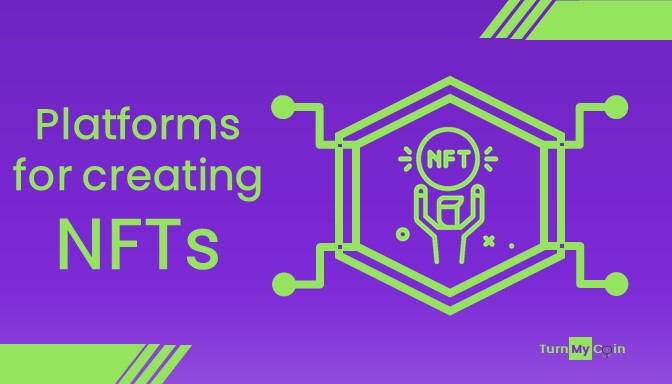
Opensea.io
NFTs on Ethereum have open-source standards to hold them in your wallet. Once you have ETH in your wallet, then you are not dependent on any specific platform. You can create your Non-Fungible Token on Opensea, and put it up for display. During the entire transaction, ETH s safe in your wallet! Also, Opensea has recently announced that a user can mint NFTs without paying any gas fees.
To make it more feasible they have mentioned a step-by-step guide. You can create an entire collection of assets to add under an NFT. It supports adding images, videos, 3D models/mockups, music, or any other type of digital asset. Also, it gives an option to add a name, description, set the rarity of the NFTs as well.
Binance
Binance is the worlds most popular cryptocurrency exchange. You can buy and auction your NFTs at Binance. It has it’s own marketplace where you can list your NFT.
Since Binance has an ever-increasing user base, it is really easy to sell off your NFTs.
The creator who mints NFTs gets 1% Royalty on all subsequent trading. The creator has an option to either put his work on Auction or for a fixed price.
Accordingly, the buyers can bid on the platform to buy the NFTs.
In order to buy, sell or Create your NFT on Binance, you need to open an account there.
Mintbase
Another platform for creating NFTs is MintBase, and it is similar to OpenSea where you must create a store to create an NFT. There is a step-by-step guide available for people new to the cryptocurrency spectrum. But, one thing that separates the mint base from the platform “OpenSea” is that it supports only images.
Therefore, it is best for visual artists. At the moment, the platform supports no other digital media. While creating the NFT, you must specify the name, description, quantity of the asset to your store. Here, all the NFTs are put up for sale by default, but you can disable this by unchecking a checkbox.
Foundation
The third platform is Foundation. But it is an invite-based system for NFT creators. Anyone can make a profile on the platform, but only a few creators can create NFTs. Just like others, they have also created their guide to create NFTs on their platform. Also, Foundation supports Minting NFTs containing images, videos, audio files, 3D models, etc. You can choose the name, description and provide the quantity within the NFT.
Therefore, anyone can create their NFT by signing up to these platforms!
What are they used for?
Here in this section, we are going to talk about how NFTs can be useful along with identifying the main problems faced while protecting assets on today’s internet!
Here’s why NFTs are a viable option to protect digital assets.
Problems faced on today’s internet:
- You cannot differentiate between a copy and original digital art. For example, the copy jpg & mp3 are the same as the original.
- The ownership of your assets is on the servers of financial institutions. These are prone to attacks from hackers!
- Creators have to rely on the platforms they use for security, and they have to take their word for it.
NFTs solve them all:
- Non-Fungible Tokens are unique, and no two NFTs can be the same.
- Every NFT’s ownership can be verified publicly.
- NFTs are compatible with anything based on Ethereum and Binance Smart Chain, and you can trade & protect your digital assets within the Ethereum or BSC ecosystem.
- Creators do not have to rely on the platforms they use! They can protect their work with ownership rights and claim their royalties. Also, no one can use their artwork, as it can be verified directly using a public blockchain network.
- You can create an NFT for anything that you may find valuable. It gives you the absolute power to choose your valuables and protect them!
Summing up
Non-Fungible Tokens are the future and they simplify a lot of problems. It opens up the window to a bright future where NFTs are a feasible option for a variety of reasons. Also, you can use your NFT as collateral to secure decentralized loans over the blockchain network.
It gives people absolute control to protect their artwork on the internet. But we recommend that you do your research before jumping in!
